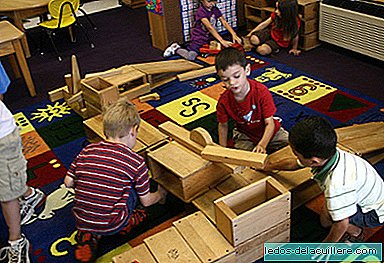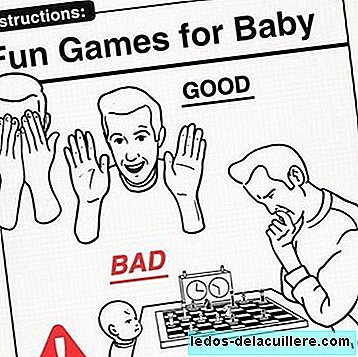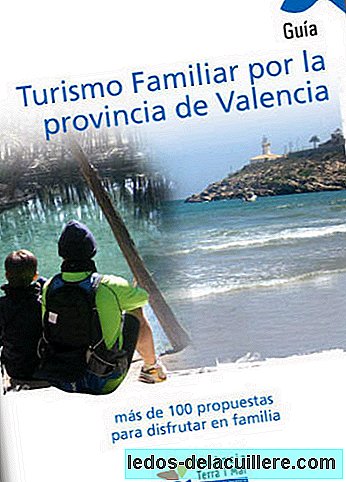
In the spring of 2013 I saw a Chronicles program (on RTVE) that was called “The Chain of Silence”. Through a series of real testimonials the causes of bullying were analyzed, and possible solutions to eradicate it from schools and institutes.
Looking at it, I realized that as the program showed, the main problem to end bullying is the silence that surrounds it. Silence because the victim is silent, and those around her (other students, sometimes even teachers) look the other way. In fact, taking into account the responsibility of the educational Institution regarding the safety of the students it receives, in a certain sense it may be considered that it should be an obligation for them to protect them; although it is true that the family and society must take a very important role in this regard.
Watching Chronicles I met a program called “Peer Tutoring” (TEI) which takes place at the IES Front Marítim in Barcelona. It is a program for the prevention of violence launched by the Institute of Education Sciences of the University of Barcelona.
Today we are going to meet the author of the TEI, his name is Andrés Bellido and he is the coordinator of the research team for this program, as well as a counselor in the Front Marítim. According to his curriculum, Andrés has a degree in Psychology and Professor of Psychology and Pedagogy.
I leave you with the interview we have done.
Peques y Más.- When did this program begin to be implemented in your Institute? What were your main motivations?
Andrés Bellido.- The Peer Tutoring program is a project for the improvement of coexistence, specially designed for the prevention of violence (verbal, psychological, physical and emotional) and bullying in primary and secondary schools.
Its development begins in 2002 by a group of professionals in the educational field (Psychology, pedagogy, teachers and teachers)
8 years ago it was implemented at the Front Maritime Institute of Barcelona, with results that we consider highly positive.
The main motivations to start the program are:
Engage students in their own training process: commitment, responsibility, identity, effort, belonging.
Influence coexistence as an objective to share among all the elements that make up the educational community, in which students are a fundamental piece.
Modify the disruptive behaviors that allow us to positiveize the climate of the educational center, from the perspective of the student, where values, commitment and effort are the key pieces of coexistence.
The percentages of bullying have increased in Primary and Secondary Education, and it is this situation that leads us to develop a program to improve school integration, working an inclusive and non-violent culture in schools. With the TEI the 'equals' are the active subjects of the process
PyM.- Is bullying a problem whose incidence increases over time?
A.B.- If we make an approximation in figures on the current situation of abuse among equals, we highlight, for its longitudinal vision and update, the studies carried out by the Basque Institute for Educational Evaluation and Research (ISEI.IVEI): "The abuse between equals in Primary Education cast". This study affirms that, according to the general index of abuse 2012; This affects 21% of the students of the third cycle of Primary and 14.6% of those of Secondary. With respect to the last edition of 2009, the percentages have increased by 4% and 2.8%, respectively.
These situations have led us to develop a program that aims to improve school integration and work for an inclusive culture and not violent in educational centers, in which the same are the active subjects of the process.
I believe that we have started a path - work for emotional competences, coexistence, education in values ... that should not only curb this trend, but also move towards a process of significant discrimination of these behaviors. To obtain these results we need prevention, as always when we talk about behaviors and especially in education the results are medium and long term.
PyM.- What are its main causes?
A.B.- The behaviors that are manifested with bullying all aspects of interpersonal relationships and in broad strokes we could specify in those collected by the Report of the Ombudsman "The abuse among equals in ESO 2007"
 Types of Aggression and types of Conduct
Types of Aggression and types of Conduct"Normality" considers behaviors such as exclusion, motives, verbal violence ..., both by teachers and students, parents and society in general as usual and therefore normalized within the relationship between equals. It is not taken into account that on too many occasions, they hurt, hurt the other, exclude the group intentionally; when the group is surely the integrating element par excellence.
As teachers, professionals or institutions, we must listen to students, and intervene in the face of symptoms, in no case wait for situations of violence to occur.
In the first place, our action is directed at the victim: there is a very important aspect in the intervention and that is that the victim is not guilty of the situation that has been generated
PyM.- Faced with bullying episodes, why should we deal with victims first? What can we do to re-educate an aggressor?
A.B.- The basic objective of the TEI Program is that in no case do violent episodes occur systematically, to intervene when the first symptoms or alarm signals occur, and in this aspect the studies show that it is the students who detect them and know them in more than 80% of cases, compared to 10% -15% by part of the teaching staff and the family, so it is they who must intervene when alarm signals occur. Obviously this does not exclude institutional, family or educational intervention.
Focusing on the question, first of all our action should be directed at the victim. Without entering into an exhaustive development of the intervention protocol, we can find several intervention publications in cases of bullying of different education departments - Basque Country, Navarra, Valencia, Catalonia - we will make some intervention reference.
Usually it is the victim who denounces, either through the same students, the family or the teaching staff, we must preserve their identity, strengthen self-esteem, avoid continuous exposure to risk, it must be personal, confidential and immediate if possible and of course Eliminate disruptive behavior of peers who are the cause of the harassment. I consider that there is a very important aspect in the intervention and that the victim is not guilty of situation that has been generated.
The intervention regarding the stalker or group must also be immediate, it depends a lot on the source of information or complaint, but in summary, we must verify that the accusations are true, inform the parents and work on the behavior that has caused or caused the situation of harassment (follow the protocol stipulated by the administration or educational center).
The behaviors are modifiable. This change in behavior must become the preferred objective of our interventions, that even considering that there are these situations of harassment, the harassers are our students and our goal from the perspective of intervention is the inclusion, both of the victim and the aggressor, in the case of the stalker, the intervention on the behaviors must be public (about the behavior) and worked in the class group always saving the identity of the aggressor.
PyM.- Why does a high school student trust his peers or parents more to talk about the problems he has?
A.B.- Not only high school students, but also elementary school students. It is a reference of “older brother”, and the reasons for trust could be synthesized in:
- Because they know the possible situations of harassment, the symptoms.
- It is the older students - two more years - with superior physical, psychological and emotional development, responsible for the intervention. (chronological proximity)
- The student tutors are a reference (idealization, experience, future projection) for the authorized
- They speak the same "language", their communication and intervention strategies are more direct and especially close, both with regard to the symptom of possible harassment situation, as well as the group's identity.
- They have been trained for intervention
As a synthesis we can conclude that a disruptive behavior (symptom of violence or possible harassment) is systematically intervened from three perspectives: Third-party student, tutor and coordinator, all before reaching disciplinary regime.
PyM- How have you measured the results in the application of the TEI? What changes have you observed since the first year of your program?
A.B.- The evaluation is carried out by both the tutors and authorized students, as well as the teaching staff and the management team.
It focuses on the significant reduction of conflicts, violent behaviors, in any of its manifestations and specifically, in the warnings, parties, expulsions of the students involved in the program, a situation that in the second year of application affects 100% of the students of high school.
In any case, I consider them to be less tangible elements, such as the climate at the center and the dynamics of the relationship between students, on which it most affects, and the terminal objective of the TEI program.
No one has the right to raise their level of self-esteem, their leadership within the group at the expense of a partner, that is something we should not allow, either as citizens, or as students of the educational center
PyM.- The student tutors volunteers? What kind of training do they receive?
A.B.- The basic objective of information, awareness and training is to work on values, raise awareness among students, about companionship, responsibility, identity ... belonging to the institution as a sign of identity of the school.
Our educational community has a very strong identity sign, is that of ZERO TOLENCE regarding violence (verbal-psychological and physical) as a sign of identity of our educational community.
No one has the right to raise their level of self-esteem, their leadership within the group at the expense of a partner, that is something we should not allow, either as citizens, or as students of the educational center and especially within our class group. "From now on those students who perform these behaviors are doing so with the intention of harming, and we cannot allow this"
The information process, sensitization of all the students involved in the program and the training of the tutors (third in secondary and fifth in primary) takes place in three main fields: information and awareness, tutors training and continuing education.
PyM.- I would like you to tell us what criteria you follow to assign tutor to ESO First students.
A.B.- The allocation methodology of the TEI program, without entering into its detailed development, is carried out in secondary school as follows:
All first-year students have a third-party volunteer tutor, in all centers that apply the program the percentage of third-party volunteer students is greater than 90%).
The second teaching team of ESO at the end of the course (June), normally at the last meeting already proposed by the tutor determines the level of “competence” of the students with the valuations 1, 2, or 3, considering that The optimal level of competence of a tutor is 3 Regarding first-year students, the same procedure is followed in the process of transferring primary-secondary, in this case the “needs” of tutoring with levels 1, 2 or 3 in which the highest need is level 3.
Next, the coordinator with the tutors or the pedagogical coordinator matches the competences with the needs, that is, the low need level with low competence, medium need with medium and high need level (3) with high proficiency level (3. In case there are significant differences in levels the closest are adapted between needs and competences.
If the number of third-party students is lower, it is possible to opt for some third-party tutors to always have two tutorials, we talk about competencies 3 to which level 3 and level 1 tutorials are assigned. In the case that first-year students are significantly higher, a fourth course can be chosen that are tutors of first-class students, with the same assignment procedure ...
PyM.- Is the team of professionals responsible for TEI always the same?
A.B.- It may vary, but we believe that it is positive that it is not rotating in the case of the professional leading the coordination of the program. In any case, we must not forget that the program involves the entire educational community, it is an institutional program of an educational center, in which all teachers are directly or indirectly involved.
The key to the success of the TEI Program is the involvement of students as active subjects of their own educational process, the need that the adolescent has to feel active element within the educational community and the school institution
PyM.- Is the TEI 'exclusive' of the IES Front Marítim, or has the model been exported to other centers? What do you think is the key to your success?
A.B.- While the Front Maritime Institute of Barcelona is the reference center of the TEI Program, it has been implemented gradually in different educational centers. As of next year, September 2014, it will be developed in some 200 primary and secondary schools and special education at the state level, both public and private and concerted, with an involvement of some 30,000 students.
Currently, training has been carried out or in various autonomous communities such as: Castilla y León, Cataluña, Comunidad Valenciana, Galicia, Aragón, Canary Islands, Balearic Islands, Madrid, Castilla la Mancha ... It is also part of the permanent teacher training from various public and private education administrations and universities.
The next course 2014-15 the experience has been extended to a population of 40,000 inhabitants and a city of 250,000 inhabitants with commissioning simultaneously in 16 secondary schools. We have also started the project of its development in primary and secondary schools in the Sant Martí district of Barcelona.
I believe that the key to the success of the TEI Program is the involvement of students as active subjects of their own educational process, the need that the adolescent has to feel active element within the educational community and the school institution.
Another important aspect is the impact of the program, both at the level of intensity in individual awareness and the number of people involved, we must take into account that in a 3-line center are involved, either as tutors or as tutoring 180 students, which represents 50% of all ESO students, which in two years affects 100% of secondary school students.
The program facilitates the modification of the climate of the center regarding violence and coexistence, based on the change of individual behavior, through the pressure of the group (basically by modification of the behavior of the group, with the absence of reinforcers of disruptive behaviors) to reach a climate of group-class awareness and as an extension, of coexistence from the educative centre
Now it's time to say goodbye to Andrés and thank him for his presence in Peques y Más and his collaboration in making the TEI program known. I have considered that the great effort of all the people involved in the development of this intervention deserves to be known. And I'm so glad that the experience is being extended.
It is a sign that with a little effort and involvement you can deal with bullying, supporting victims and modifying the behavior of the aggressors.
The course has not started yet, but for that reason (and because there are few days left) I have chosen this date, so that this information is progressively disseminated.
In Peques and More | Cooperative learning reduces bullying behaviors in classrooms, Avoiding school violence through conflict resolution, 'Bullying or bullying': a practical guide to fight against school abuse and its consequences












